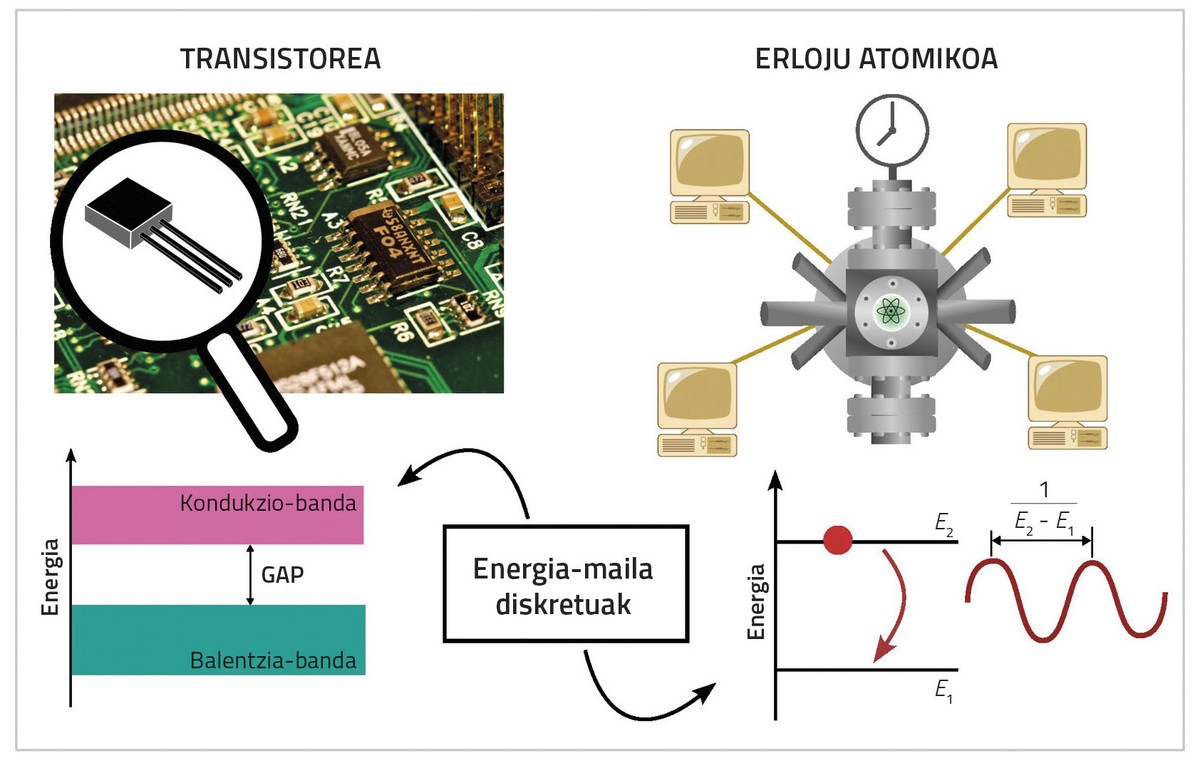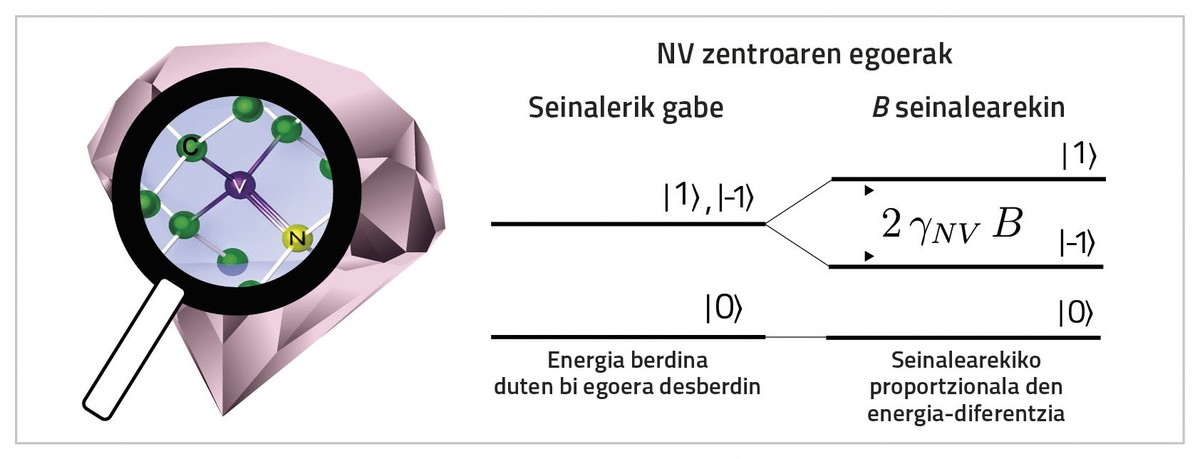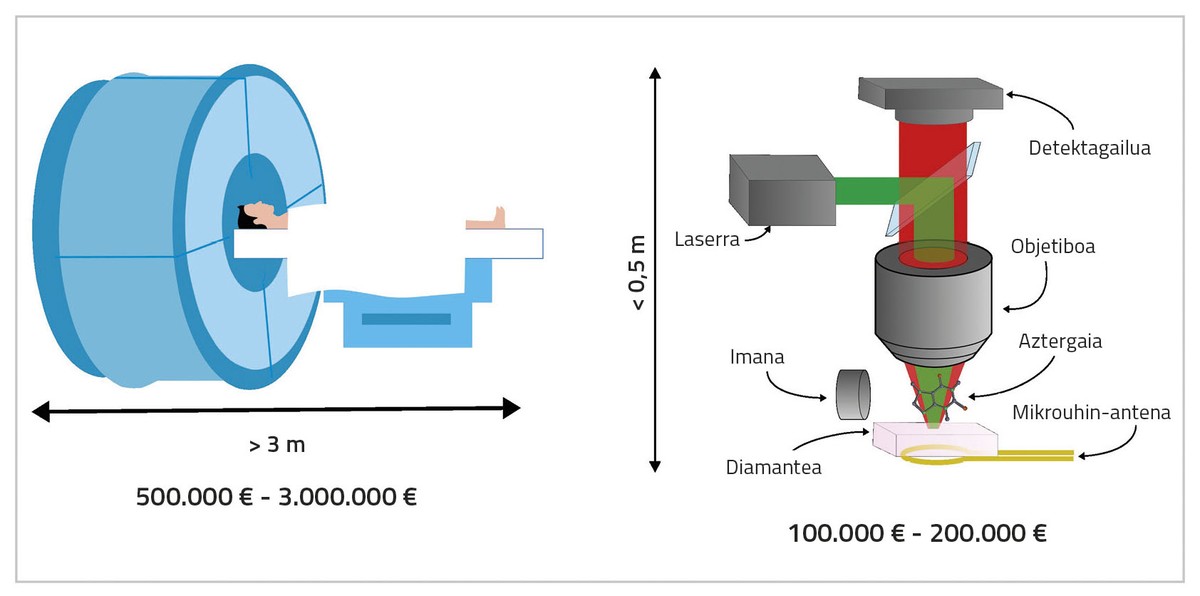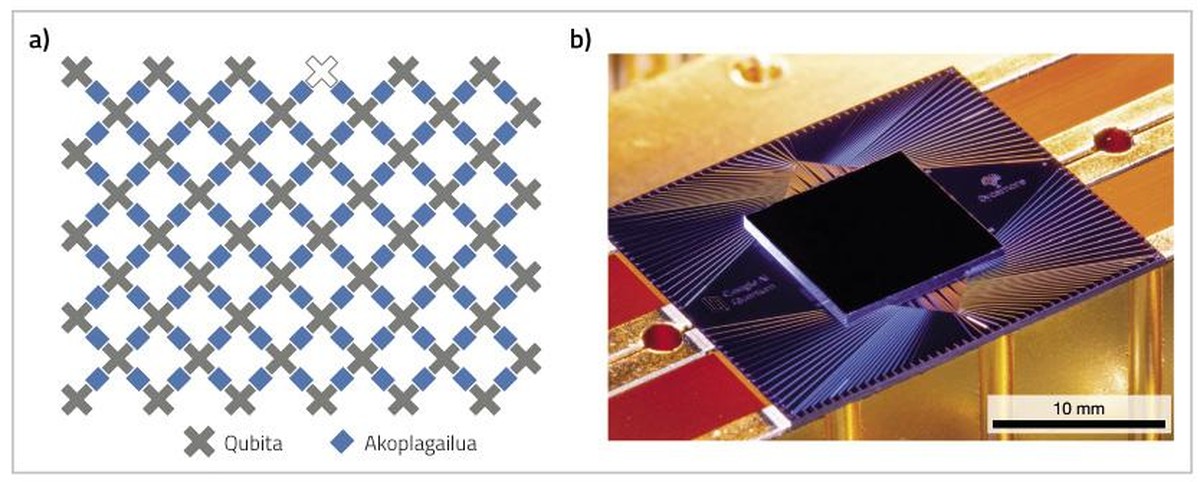New rules, new toys
2024/10/23 Tobalina Novo, Ander - Gasteizko Ingenieritza Eskolako irakaslea, EHU Quantun Center-eko ikertzailea, Fisika teorikoan doktorea Iturria: Elhuyar aldizkaria
Human beings have been in the backyard of technology for a long time. Always, the truth. At the time when there was no Homo sapiens yet, there were hominids working stone tools for both hunting and food preparation. This power was indeed the hallmark that distinguished the first members of the homo genre from their predecessors. Today, even though it's a concept that we associate with the newly released mobile phone or some artificial intelligence application, it's actually technology, it's knowledge. A knowledge of the techniques and skills that throughout the centuries have allowed us to understand and master the environment. We, the human being, the capacity that defines us.
From stone tools, we've been very attentive to exploring the technology backyard. We have come a long way from fire-control to the Internet, through the development of agriculture, the invention of the wheel and the production of electricity. The last step in this path forces us to explore the weird behavior of matter at the smallest scales. Over 2 million years in this courtyard, and we still find new corners. In addition, it seems that in this corner things are done differently, that their position is regulated by a set of different laws. Is it possible that these new laws will make it possible to develop new toys?
New rules: Quantum mechanics
At the beginning of the 20th century, due to the results that were incomprehensible in the knowledge of the time, new concepts about the fundamental behavior of matter were known. The discreet (not continuous) nature of energy is one of them. In our daily lives, we see how energy is exchanged continuously. For example, if we go to the mountain, at some point we will pass through all the heights that are from the starting point to the top. In addition, by slowing the car, the car reaches all speeds ranging from the starting value to zero, all of them. That is, we get or lose energy (in one case, kinetics in another) continuously. On the other hand, on an atomic scale, energy is exchanged in paquetites, that is, it changes leaps. As if it were a money exchange, where the lowest amount we can take or give is the one that sets the value of the smallest currency, there is a minimum value for energy exchange: the amount.
The knowledge of the discreet nature of energy triggered the first quantum revolution and ensured the development of various technologies that shape the world today, such as the transistor. For many, this invention, the most important invention of the 20th century, is the basis of all the electronic devices that are currently omnipresent, and more than a trillion copies are produced every second in the world. Every second! That is no small thing! Atomic clocks also developed within the first quantum revolution. These are based on the difference of two energy levels of an atom to measure the time, and the functioning of the current communication systems, via the Internet, depends on the precise measurements given by this clock (see Figure 1).

So there are already technologies based on quantum mechanics among us. In any case, today we say that a second quantum revolution is already underway. What has led to this new revolution? Well, progress in the field of engineering has allowed individual quantum systems to be controlled, which in turn has allowed new quantum phenomena to explode, especially that of superpowers. In short, the ability of a quantum system to exist at the same time in all possible situations. Thus, by measuring a system property, we can get any admitted value (the discrete nature of energy excludes many values) with the probability corresponding to each one of them. The overlap also allows a special correlation between systems, quantum entanglement, the correlation that is maintained despite the distance of the systems. In the article "When Fiction Becomes Reality" by Gorka Azkune you will find a magnificent explanation of these quantum principles. 1].
New toys: Quantum computer
With these new rules in hand, we're looking forward to starting to play, but where do we start? In the playground of technology there is a common feature of the most precious toys: they have an electronic device that processes information, that is, a computer. If it were possible to improve these machines by using quantum systems, they would be a good starting point.
A computer basically takes information and performs logical operations with it to solve the problem in question. The number of operations to be carried out, increasingly, will require an increasing amount of time for the computer to solve the problem. We know that the time to solve some problems, even in the most powerful computers in the world, is superior to the age of the universe. A typical example of this kind of problem is the factorization of whole numbers. In any case, in a study published in 1997, Peter Shore showed that a computer that exploits the quantum of overloads can solve the factorization of numbers in a short time. Given that this problem is the basis of most of the world’s encryption systems, it is not surprising how much fuss this work has caused. It became clear that quantum computers were able to solve problems that were previously considered impossible.
Since then, with the help of the most powerful companies and governments in the world, we have known the technological career to obtain the quantum computer, plagued with news of all kinds [3] and with large-scale defeats [4] (to delve into this issue you can go to the article written by Iñigo Arrazola [5]). However, it's been over 25 years, and there are no quantum computers in our homes. Why not? The main reason is the great sensitivity of quantum systems. The influence of the environment on quantum systems destroys overlap. Therefore, the exploitation of this property implies the maintenance of systems completely isolated from the environment for long periods of time, assuming an important technical challenge. Therefore, the processing of information requires thorough monitoring of the state of these systems. Managing a single system is not difficult (at least in specialized laboratories), but solving real problems requires a considerable number of interaction systems, which makes it extremely difficult to control situations. It appears that the total overcoming of these difficulties is taking place in the absence of several years. Meanwhile, there are simple quantum computers that are useful in some sectors, but there seems to be no toys that generate a real revolution in the short term.
Playing with common sense: Quantum sensors
But let us not be discouraged. In fact, the same characteristic that prevents the development of quantum computers, the sensitivity to the environment, facilitates the achievement of another type of toy. Sensors [6] are devices that we can find anywhere, as accurate measurement of physical properties is fundamental in many aspects of our society. Medicine is a clear example of this, in which obtaining accurate information about the functioning of the body can lead to proper diagnosis and treatment.
Nuclear magnetic resonance is one of the most commonly used procedures for accessing this information. Our body's atoms (especially hydrogen atoms present in water molecules), due to magnetic fields and the response to radio waves, emit a magnetic signal that allows us to determine the position of the emitting atoms and thus construct the internal image of the body. Various structures (joints, organs, etc.) is a preferred procedure for its study and, in general, a highly successful diagnostic test. However, this improvement procedure has much to improve.
The sensitivity of the sensors used by the hospital's MRI machines is low, that is, they hardly detect weak MRI signals, such as those emitted by our body. This implies the need to create very high magnetic fields (the signal generated is proportional to the field), which increases the technical complexity and price of the machines. Consequently, it is an occasional procedure, today, MRI, which is performed when other tests point to a problem and which usually has long waiting lists. Will there be any toy that can alleviate this situation in this singular corner of the patio? Well, if there is, it's also made of diamonds.

Diamond is a network of carbon atoms in which mistakes can occur, for example, a nitrogen instead of a carbon and a vacuum in a lateral location. This structure, known as the NV Center, is a perfect platform for the development of quantum technology [7], easy to control, cheap and with room temperature. It also responds to changes in some physical properties, including the magnetic field, making it ideal for sensor operations (see Figure 2). Moreover, NV centers are extremely sensitive, as they also perceive the least significant variations of the magnetic field. Tests conducted in the context of MRI with this type of systems have yielded surprising results: a single molecule emitted magnetic signal [8] has been detected and monocellular resolution MRI images have been obtained, among others [9]. In addition, there are already organizations that have developed products based on the above experiments, which have broken the path of making MRI a standard procedure in tomorrow's hospitals (see Figure 3).

The measurement of MRI signals is but an example of the transformative capacity of quantum sensors, obviously significant, but ultimately an example. In the same vein, we could fill in other countless pages, one with applications as outstanding as the other. However, these types of toys often attract little attention, although they are the quantum devices closest to the needs of society. It's time, therefore, to take quantum sensors out of the shadow of the most fascinating technologies and get the attention they deserve.
Bibliography
[1] Azkune Galparsoro, G. 2014. “When fiction becomes reality.” Elhuyar Journal, 308.
[2] W. Shor, P. 1997. “Polynomial-Time Algorithms for Prime Factorization and Discrete Logarithms on a Quantum Computer”. SIAM Journal on Computing, 26, 5.
[3] Arute, F. et al. 2019. “Quantum supremacy using a programmable superconducting processor”. Nature, 574, 505-510.
Pednault, E.; Maslov, D.; Gunnels, J. and Gambetta, J. 2019 “On ‘quantum supremacy’. Blog IBM.
[5] Arrázola Maiztegi, I. 2020. “Google and quantum domain.” Elhuyar Journal, 340.
[6] Degen, C. L.; Reinhard, F. and Cappellaro, P. 2017. “Quantum sensing”. Rev. Mod. Phys! 89.
[7] Doherty, M.W. et al. 2013. “The spray-vacancy colour centre in diamond”. Reports, 528, 1, 1-45.
[8] Lovchinsky, I. et al. 2016. “Nuclear magnetic resonance detection and spectroscopy of single proteins using quantum logic”. Science 351, 6275, 836-841.
[9] Glenn D.R. 2015. “Single-cell magnetic imaging at quantum diamond microscope”. Nature Methods, 12, 736-738.

Gai honi buruzko eduki gehiago
Elhuyarrek garatutako teknologia





